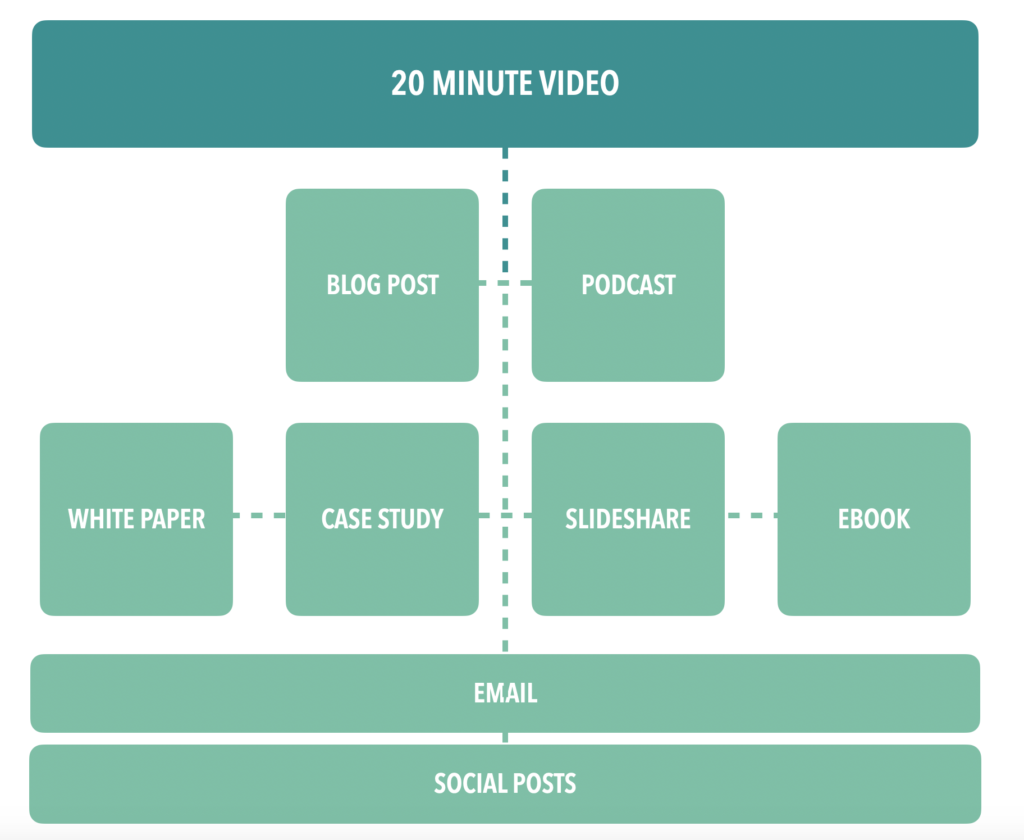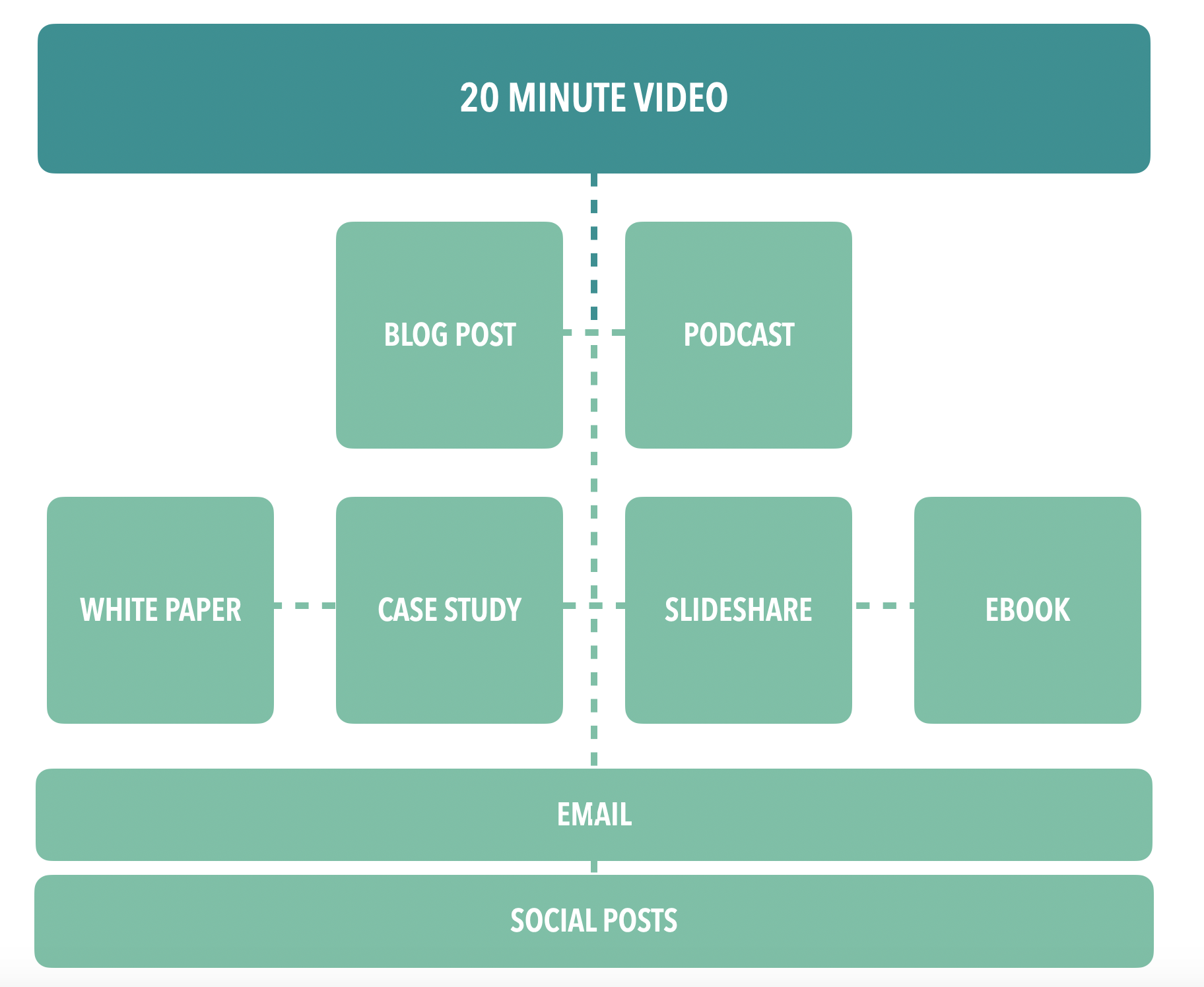Video is a powerful tool because it gives you something to see, hear, and experience. The combination of visual and audio content allows people to see the human side of your organization or product. So, it’s no wonder that video, especially live video, is a vital element of many organizations’ content communities. However, live video is also a medium that many markets shy away from — it’s hard to create a polished product on the fly, and video production lies way outside of the scripted, typed and scheduled content we may be used to making.
At Found Conference, we heard from the video experts on making video — especially live video — part of a holistic content strategy. Read on for some ideas on going live, and making your airtime valuable for customers.
Get your video content organized before you go live
Tonnisha English, Founder of TJE Communications, works with small and family-owned businesses. She began using live video as a way to promote her own expertise in the SEO industry, and says not to fear the “awkwardness” that comes with going live. She shared some tips to make your Live videos easier and more effective.

- Have talking points. Don’t get on Facebook Live and ramble for an hour! Most audiences won’t tune in for a long live video, so make sure you know your point and get right to it. Tonnisha says she creates a theme each month for her live videos, and breaks down a sub-topic of that theme each week.
- Be consistent. Pick a day and time that works for you, so your followers know when to expect you. Create a flow that works for you — maybe you start with a similar greeting or outline for each show. There’s a reason that “hey all you cool cats and kittens” is memorable, and that reason is repetition.
- Be yourself! Audiences respond to fun, authentic voices. People watch these videos to see the face behind the brand. A Live video isn’t a white paper — it’s not going to be referenced over and over, it’s merely sharing some in-the-moment info. After you do a Live video, you can always delete it — it doesn’t have to live on your social media page forever.
Know your customer’s true pain points
Amy Vaughan, CEO at Together Digital and a veteran video editor, talked about the challenges of creating an overarching video strategy. Amy says that video is frequently created based on one of two things: data (expensive, time-consuming, and sometimes leads to video marketing that serves the data instead of the brand) and BS (which leads to videos that may not provide the information audiences want). If you don’t have perfect data, and you don’t want to bullshit your customers, Amy says to focus on “the customer’s truth:” that problem or pain point that you know your brand can solve. “People will buy what we sell,” she says, “but they believe the truth.”
Be as strategic as you would be with any other type of content, and ask questions as part of your creative process. Who is your audience, and why are you talking to them? What do you want to say? What length should the video be and why? When should your videos run? What type of interaction are you hoping to gain from video? Our best creatives are empathetic to the customer — and they ask a lot of questions.
If you’re doing live video, you don’t have to stick with timeless topics. The flexibility of live video allows you to respond to real-world issues as they enter your audience’s field of view. If a breaking story relates to your industry, go ahead and focus on that topic in your next video. However, you’ll want to avoid becoming a crisis news channel: create a backlog of evergreen topic ideas that you want to address, and use those to mix perennial video topics into your queue.
Use video as a starting point for your content’s findability
Erin Acheson, President & COO of DemandSphere, built a lush content jungle after starting Demandsphere’s Found Friday videos. In the early 2010s, Erin created a weekly show about the SEO industry, largely based on conversations with other SEOs surrounding current events in digital marketing. From there, Found Friday turned into much more.
In addition to creating the Found Friday weekly videos, Erin and Ray Grieselhuber, Demandsphers’s CEO and Founder, began a weekly iTunes podcast with a similar Found Friday format. Content from the Found Friday blogs have been used as white papers, Slideshares and case studies, building out on the content created by Erin, Ray, and guest speakers from Found Friday.
Rather than keeping the Found Friday videos corralled on YouTube, Erin creates blog posts based on the content of each show, or asks a Demandsphere writer to create a post using the video’s content as a guide. You’re looking at one such blog entry — we embed the original video in those posts, and include show notes, visuals, and other relevant information from that show. The result: reader-friendly, search engine optimized posts (like this one!) that live on our site instead of Vimeo or YouTube.

If a topic gets a particularly high level of interest, Erin says, she links blog posts, white papers, and case studies surrounding that topic and creates an ebook or other large piece of content. All of these items are sharable fodder for email or social media: still two huge channels for inbound traffic. It’s a huge amount of timely, topical information that meets users in multiple arenas. And, all of these pieces are based on a show that takes less than an hour of Demandsphere leadership’s time each week.
If you want to start with video and build out from there, remember your goals. It’s not just about creating one engaging video, then taking that content and spraying it everywhere.. What about that video is socially engaging, and how can you have that content in a meaningful way on an alternate channel? Maybe you have a discussion on a technical topic on video — could you build that into an infographic that might work for Pinterest? Starting with video allows you to try out topics, see how those topics perform for your video audience, and create some great content that may be translatable into other channels. Just like any type of content, video should meet your audience at their problems: and demonstrate your organization’s solutions.
Create a video foundation for your content marketing empire
Erin makes a few suggestions:
-
Pick the right person or people for your video
Select speakers who are comfortable on camera, and who will be available on a consistent basis. Depending on your brand, the best person for your live videos may not be the most traditionally “professional” character in your office! Again, live video is all about authenticity.
-
Choose a realistic frequency for content creation
Don’t promise to do a bi-weekly video series that won’t actually materialize. But, do consider ways to make your video happen even under less-than-optimal circumstances! Erin says many of the Found Friday guests actually call in to the video: and, because the show is so topical and knowledge-based, a disembodied voice works perfectly well as a guest. Expectations have changed regarding production quality, in part because video occupies so many purposes in today’s world.
-
Start small and build
Don’t start out expecting that each video created can be used to build a blog post, white paper, ebook, email series, and set of awesome social media posts. Start with the video. See how long it takes to create a few of these pieces of content, and measure your audience’s response. Once you create a cadence, this is a great way to build an agile, repeatable process.
-
Post about your videos on social, and share them through email
Email and social have a symbiotic relationship to live video. In addition to the organic findability aspect of video, you can use those other channels to remind viewers to check out your videos and to tune in when you go live.
For many marketers, video is about brand awareness and engaging your most high-quality prospective customers, but video allows room for all types of content. Think about what your company needs to showcase: from how-tos to testimonials to fun reminders of who you are, there may be room for live video in your content ecosystem.

